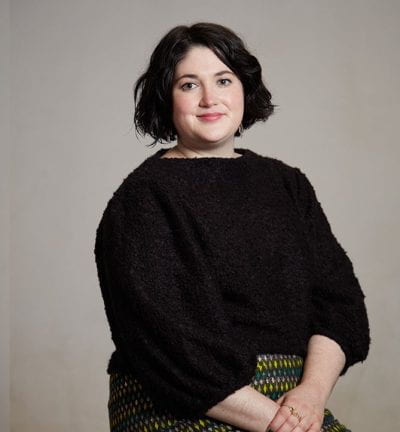Expressions Presents: Carla Fisher Schwartz: Mapping World Views
By Hanh Ha, ’24 English
This article was originally published by the College of Humanities and the Arts in the winter 2023 edition of Expressions, a newsletter created by students in HA-187: Creative Team Practicum. The internship course gives students the opportunity to gain professional experience in writing, graphic design, photography, and video production.
In graduate school, a professor handed Carla Fisher Schwartz a book about maps as a way of thinking about them in terms of creative writing. That book kickstarted her journey in breaking down the art of cartography. Now an assistant professor of pictorial art in San José State’s Department of Art and Art History, Fisher Schwartz uses her knack for maps to explore how people navigate a complex world, especially regarding how historical and graphic content is being distributed for various purposes. However, her study has been trained towards a traditional way of printmaking, which refers to the artistic technique of transferring an image from one surface to another. Now, she works more closely with digitals and expanded methods, which are the opposite of traditional.
Her fascination with maps traces back to the time when she lived in the Los Angeles area; before the era of smartphones, she relied on the Thomas Guide to navigate the sprawling city. A series of atlases in a spiral-bound paperback, the Thomas Guide became Fisher Schwartz’s tool for exploration. That changed once she owned a smartphone. “I’ve always been dependent on maps,” she says. “When I got a smartphone, my ability to navigate completely was lost because now I have this seemingly infinite map, albeit a very flawed one, in my pocket.”

Assistant Professor of Pictorial Art Carla Fisher Schwartz advocates critical thinking and graphic literacy.
Her curiosity about the flaws of her smartphone maps didn’t stop there. She began to question the making of these maps, both digital and physical. In particular, who was the maker of these flawed maps? “We put a lot of trust in [map makers], so we’ve always seen them as an authoritative author,” she says. Fisher Schwartz started to recognize how maps have turned into tools that significantly shape our perspective of how the physical world is viewed. From the Thomas Guide to Google Earth, these maps serve as frameworks for people learning about destinations or locations without necessarily fact-checking its reliability.
Maps have become not only tools of influence but they also have ties to colonial histories and discoveries, explains Fisher Schwartz. In the heart of cartography, there is a need for questioning not just the maps themselves but the very hands that have crafted them.
In her exploration of map-making, she grapples with the idea that maps can be flawed and often reflect not just geographical realities but the perception of their makers. Fisher Schwartz points to the example of Sandy Island, an island that has been documented on maps of satellite images yet does not actually exist. These phantom islands have become a prominent staple to her creating art and statement pieces that illustrate how people tend to equate maps to reality.
Desktop Explorer, one of her art pieces, involves imitating a historical explorer, “traveling” to the nonexistent island, only from the comfort of her own home. “It was an installation, showing how I would get to an island that only exists in Google Earth and virtual maps,” she adds. This installation demonstrates a separation between her and the virtual island she’s exploring since she’s not physically traveling there.
In the era of smartphones, which expands into social media, Fisher Schwartz advocates critical thinking and graphic literacy, “the ability to look at an image or artwork and work past what we’re being told to read or what visual conventions tell us it means and think more deeply and critically.”
It has become easy to consume media at face value and to not question the legitimacy of the content within it. Fisher Schwartz views art as an important tool to addressing these concerns. “One of the things art can do is reveal or expose” she says. “I love artwork that pulls back the curtain a little bit.”




